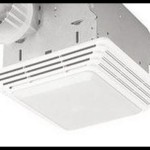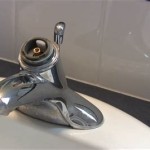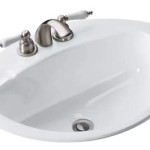How To Measure Your Bathroom Sink: A Comprehensive Guide
Accurate measurements are crucial when replacing or installing a bathroom sink. Whether upgrading an existing fixture, planning a complete bathroom renovation, or simply needing to order a replacement part, precise dimensions ensure the chosen sink fits properly and functions as intended. Inaccuracies can lead to installation difficulties, wasted materials, and ultimately, project delays and increased costs. This article provides a detailed guide on how to measure a bathroom sink effectively, covering different aspects to consider and potential challenges to avoid.
Understanding the Importance of Accurate Sink Measurements
The bathroom sink is a fundamental element of any bathroom, serving both functional and aesthetic purposes. When choosing a new sink, various factors contribute to the overall decision, including style, material, and size. The available space within the bathroom vanity or countertop dictates the maximum dimensions the sink can occupy. Consequently, precise measurements are not merely a suggestion but a necessity for a successful installation. Failing to obtain accurate measurements can result in selecting a sink that is too large or too small for the intended space, leading to significant problems.
A sink that is too large may not fit within the designated area, preventing the vanity doors from closing properly or obstructing access to other bathroom fixtures. Conversely, a sink that is too small may appear disproportionate and leave unsightly gaps, requiring additional modifications to the countertop or vanity to achieve a cohesive look. Furthermore, accurate measurements are essential when ordering replacement parts, such as drains, faucets, and mounting hardware. Mismatched components can lead to leaks, functional issues, and further complications during installation.
Furthermore, accurate measurements are especially important when dealing with undermount sinks or those embedded in countertops. The cutout size in the countertop must precisely match the dimensions of the sink to ensure a secure and watertight fit. Any deviation from the specified measurements can compromise the structural integrity of the installation and potentially lead to water damage over time. Therefore, taking the time to measure the sink accurately is a valuable investment that can save time, money, and frustration in the long run.
Essential Tools and Preparation for Measuring a Bathroom Sink
Before commencing the measurement process, it is necessary to gather the appropriate tools and prepare the workspace for optimal accuracy and efficiency. The following list outlines the essential tools required for measuring a bathroom sink:
*Measuring Tape:
A standard measuring tape with both inch and centimeter markings is fundamental. Opt for a flexible measuring tape for measuring curved surfaces and tight spaces. *Ruler:
A ruler can provide more precise measurements for smaller dimensions and details. *Level:
A level ensures that surfaces are horizontal, which is crucial when measuring the height and depth of the sink. *Pencil and Paper:
A pencil and paper are essential for recording measurements and sketching diagrams. *Camera:
A camera can be used to take photos of the sink and its surroundings, providing a visual reference during the selection process. *Calculator:
A calculator can be useful for converting measurements or calculating complex dimensions.Once the tools are assembled, prepare the workspace by clearing any obstructions around the sink. This may involve removing items from the vanity countertop or moving nearby furniture. Ensure that the sink is clean and dry to facilitate accurate measurements. If the sink is already installed, access to all sides and angles may be limited. In such cases, consider using a mirror to view hidden areas or enlisting the assistance of another person to hold the measuring tape.
For undermount sinks or sinks embedded in countertops, it may be necessary to access the underside of the sink to take accurate measurements of the cutout dimensions. This may require removing the vanity doors or accessing the plumbing connections. Proceed with caution when disassembling any plumbing components and consult a professional plumber if necessary.
Step-by-Step Guide to Measuring Different Sink Dimensions
The process of measuring a bathroom sink involves several key dimensions that must be accurately recorded. These dimensions include overall width, overall depth, overall height, bowl depth, drain hole diameter, and faucet hole configuration. Each dimension plays a crucial role in determining the compatibility of the sink with the existing or planned installation.
1. Overall Width:
The overall width refers to the horizontal distance from one side of the sink to the other. Using the measuring tape, measure the width across the widest part of the sink. Ensure that the measuring tape is held taut and parallel to the front edge of the sink. Record the measurement to the nearest eighth of an inch or millimeter.2. Overall Depth:
The overall depth refers to the distance from the front edge of the sink to the back edge. Using the measuring tape, measure the depth at the deepest part of the sink. Again, ensure that the measuring tape is held taut and perpendicular to the front edge. Record the measurement to the nearest eighth of an inch or millimeter.3. Overall Height:
The overall height refers to the vertical distance from the bottom of the sink to the highest point. This measurement is particularly important for vessel sinks or sinks that sit above the countertop. Using the measuring tape, measure the height from the bottom to the top, ensuring that the sink is level. Record the measurement to the nearest eighth of an inch or millimeter.4. Bowl Depth:
The bowl depth refers to the vertical distance from the top edge of the sink bowl to the bottom of the bowl. This measurement determines the capacity of the sink and the amount of water it can hold. Using the measuring tape, measure the depth of the bowl at its deepest point. Record the measurement to the nearest eighth of an inch or millimeter.5. Drain Hole Diameter:
The drain hole diameter refers to the size of the opening in the bottom of the sink where the drain assembly is installed. This measurement is crucial when selecting a replacement drain. Using a ruler or measuring tape, measure the diameter of the drain hole. It is usually a standard size, such as 1 1/4 or 1 1/2 inches.6. Faucet Hole Configuration:
The faucet hole configuration refers to the number and spacing of the holes in the sink or countertop for mounting the faucet. This is essential for ensuring compatibility with the chosen faucet. Count the number of holes and measure the distance between the centers of each hole. Record the measurements and note the configuration (e.g., single-hole, centerset, widespread). For widespread faucets, measure the distance between the outer holes.7. Undermount Cutout Dimensions (for Undermount Sinks):
For undermount sinks, measuring the cutout dimensions in the countertop is critical. Carefully measure the length and width of the cutout opening. Also, measure the radius of any rounded corners. These measurements will determine whether the new undermount sink will fit properly within the existing countertop opening. If replacing an existing sink, tracing the outline of the old sink on a piece of paper can provide a helpful template.8. Sink Rim Thickness/Width:
This measurement is the thickness or width of the rim that sits on the countertop for drop-in or self-rimming sinks. Understanding this dimension helps in ensuring a proper fit with the countertop.Addressing Potential Challenges and Ensuring Accuracy
While the process of measuring a bathroom sink may appear straightforward, several potential challenges can arise that can compromise the accuracy of the measurements. It is essential to be aware of these challenges and take steps to mitigate them to ensure that the measurements are as accurate as possible.
One common challenge is measuring curved or irregular surfaces. Standard measuring tapes may not conform perfectly to curved surfaces, leading to inaccurate readings. In such cases, consider using a flexible measuring tape or a string to trace the curve, then measure the string with a ruler. Another challenge is measuring sinks that are already installed, as access to all sides and angles may be limited. Using a mirror to view hidden areas or enlisting the assistance of another person can help overcome this obstacle.
Another factor that can affect accuracy is parallax error, which occurs when the measuring tape is not held perpendicular to the surface being measured. To avoid parallax error, ensure that the measuring tape is held at eye level and perpendicular to the surface. Additionally, it is important to account for any inconsistencies or variations in the sink’s dimensions. Sinks, particularly those made of ceramic or porcelain, may have slight imperfections or variations in size. Taking multiple measurements at different points and averaging the results can help minimize the impact of these variations.
When dealing with sinks that are integrated into countertops, it may be necessary to remove the countertop to obtain accurate measurements of the sink’s underside. This can be a complex and potentially damaging process, so proceed with caution and consult a professional if necessary. Finally, always double-check all measurements before making any decisions or placing any orders. A simple mistake can lead to significant problems down the line, so it is worth taking the time to verify the accuracy of the measurements.
Before purchasing any replacement sink, compare the gathered measurements with the specifications provided by the manufacturer or retailer. Pay particular attention to the tolerances and variations that may be listed in the product documentation. If there are any discrepancies or uncertainties, contact the manufacturer or retailer for clarification before proceeding with the purchase.

How To Choose The Right Vanity For Your Bathroom Riverbend Home
Bathroom Sink Drain Guide Signature Hardware

How To Choose The Best Bathroom Sink Height A Complete Guide

Bathroom Measurement Guide These Are The Measurements You Need To Know

How To Replace And Install A Bathroom Sink

16 5 X 11 In American Standard Drop Oval Bathroom Sink 0440 444ec White Theclearanceman

3 Ways To Measure A Kitchen Sink Wikihow

Bathroom Measurement Guide These Are The Measurements You Need To Know

Lordear 24 White Ceramic Vessel Bathroom Sink Three Holes

Parts Of A Sink Complete Guide For Diy Plumbing
Related Posts







